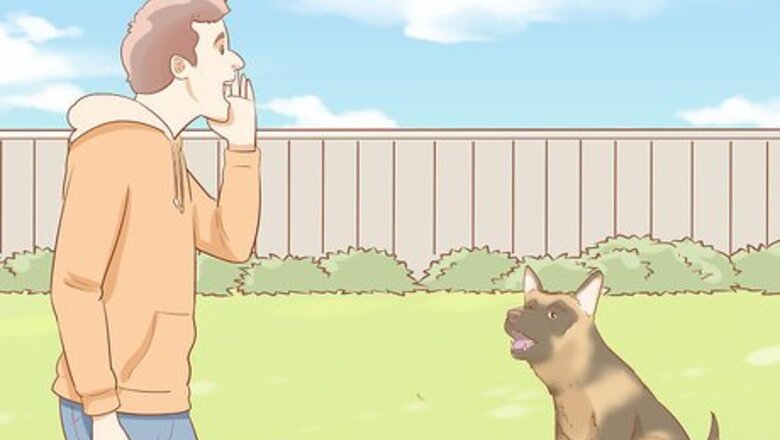
views
Physically Fighting Off a Dog
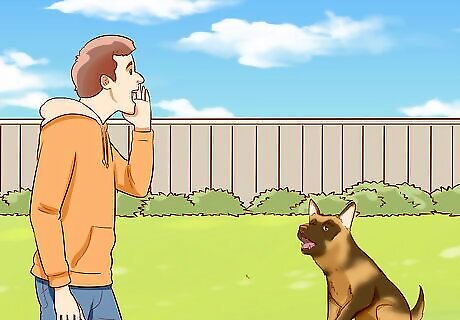
Stay on your feet and shout for help. If you let the dog jump on you or bring you to the ground, you'll be in a much weaker position and more likely to be seriously hurt. If you're in a city or residential neighborhood, call out for the dog's owner. If you're in the woods or a rural environment, you'll need to call out for any help you can get.
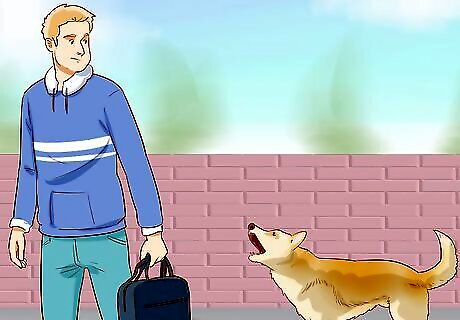
Place an object between yourself and the attacking dog. This will deter the dog from attacking you, or confuse the dog as to what part of you it should attack. If you have a backpack or bag with you, hold it in the dog's direction. If you have nothing else, you can use a piece of clothing to protect yourself from a severe bite. A frenzied dog may bite the backpack or bag in front of you, sparing your arms and legs. If you have time before the dog attacks you, you can wrap a shirt or jacket around your non-dominant arm and use that to distract the dog.
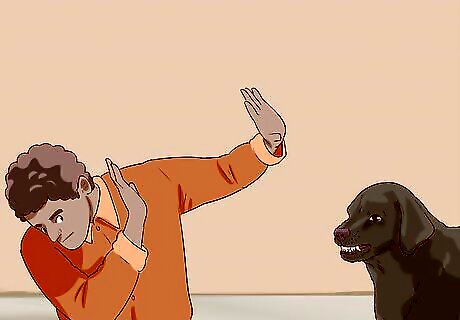
Protect your face, neck, and groin. These are the areas that a dog will first attack, and they are the most sensitive areas of your body. Use one arm to cover your face and neck, and the other to shield your groin and belly region. If the dog attacks you while you're using a hand to cover your face and neck with one hand and your groin with the other hand, it may bite you on the hand or arm—but that would be much less serious than a facial or groin wound.
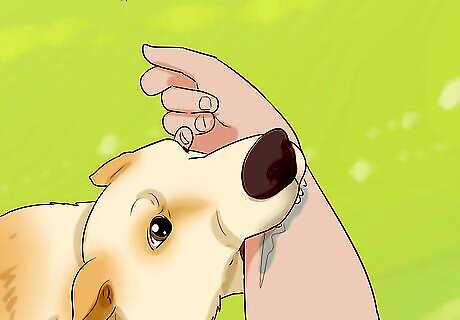
Don't pull away from a bite. If a dog has sunk its teeth into your body, don't try to wrench yourself free. This will tear the flesh and make the bite wound much worse.
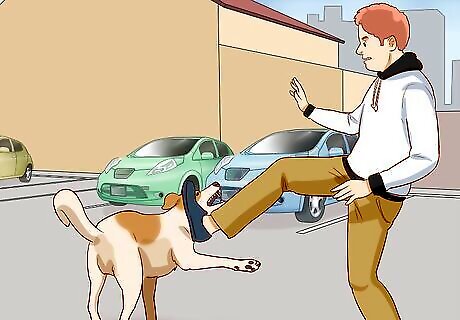
Strike the dog continuously in a vital area. If you do not have a weapon, you'll need to rely on punching, kicking, and gouging. Your best chance is to attack the dog in a vital area that is easy to injure. This will weaken the dog and reduce its ability to hurt you. Specifically, aim for the eyes, ribs, and groin. A well placed kick to the ribs with a steel-toe boot could be effective at deterring an attacking dog If a dog is latched onto your arm, attack its eyes with your thumbs, strike it in the throat, or seize the dog's throat and try to choke it. These are effective defensive measures and may stop the dog from attacking you.
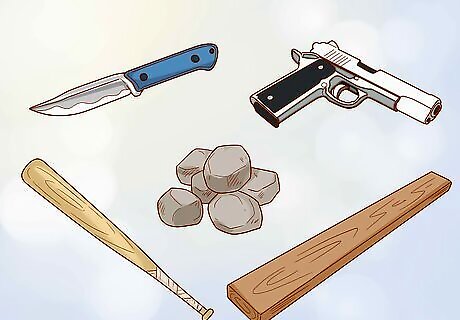
Use weapons to injure the dog. If an aggressive dog is intent on attacking and harming—or killing—you, use whatever weapons you have to protect yourself. If you have a knife, stab the dog repeatedly in its face, jaws, and throat. These are vulnerable areas that will cause serious damage and disable the animal. If you are carrying a pistol or gun, aim for the dog's head. If you're not carrying a weapon, use nearby objects (rocks or boards) to strike the dog.
Preventing Dog Attacks
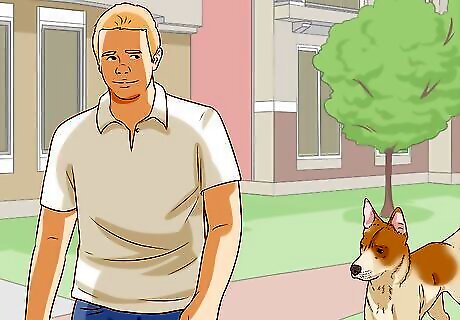
Avoid the territory of unfamiliar or dangerous dogs. Of course you shouldn't wander into yards patrolled by strangers' dogs, but dogs may also be territorial about other spaces as well. Keep this in mind if you're walking in the woods or in an unfamiliar part of town, including neighborhood streets and public parks. If you're worried that a dog seems excessively defensive or territorial, find a different way to walk so you're farther away from the dog.
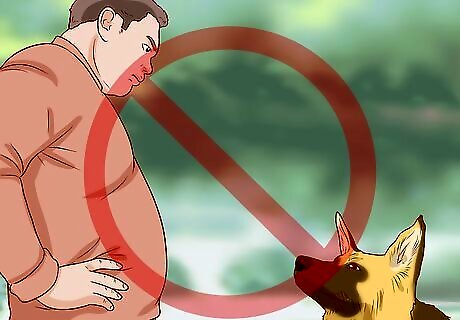
Avoid eye contact. If you're concerned about an unfamiliar or hostile dog, and think it may become aggressive and attack you, don't look it in the eye. Eye contact will signify confrontation to the dog, and it will take that as a hostile gesture. Avert your eyes by looking above or below the dog, or to its side.

Keep your hands in your pockets. When an aggressive dog is sizing you up and deciding whether or not to attack, he will be looking for parts of your body that are easy to grab on to. Hands are an easy target, since they're exposed and relatively small. Keep your hands in your pockets to avoid giving dogs an easy target, and the dog may decide not to attack you. If the dog does decide to attack, you'll need to quickly pull your hands from your pockets to defend yourself.
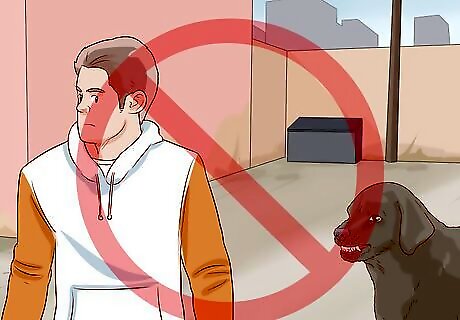
Don't turn your back on an approaching dog. A dog will take it as a sign of weakness and think you're retreating if you turn your back and run. If you turn your back, the dog will likely attack. Stand sideways to the dog, with your side facing it, and avoid sudden movements. If you stand in this non-threatening pose, the dog may lose interest and wander off. If the dog does not lose interest, walk slowly backward away from the dog until you reach safety.
Being Prepared for an Attacking Dog
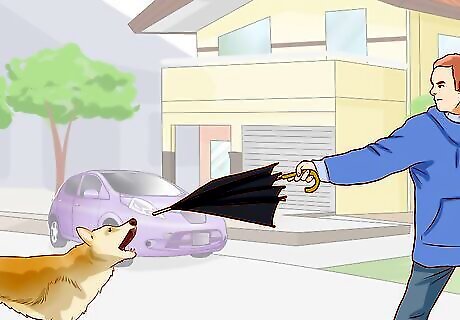
Bring something with you to serve as a shield. When you go for a walk in an area where dogs are often loose, plan ahead to bring something that can help in case of an attack. If a dog is acting aggressive or going to attack you, you can defend yourself and protect your body by placing an object between yourself and the attacking dog. The dog may even clamp down on the shielding object, and avoid harming you altogether. Having something with you like: A sweater or jacket. A book or newspaper. A cane or umbrella. A bicycle.
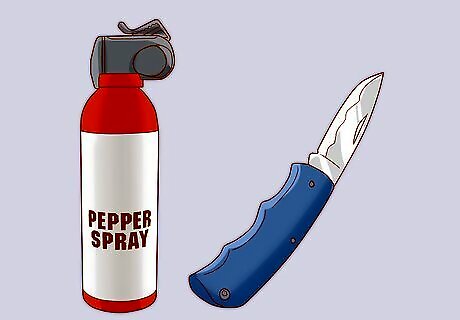
Carry a weapon with you. In case you come across an aggressive dog that attacks you, it's best to be prepared and capable of defending yourself. Pepper spray is available for this purpose, and a knife is certainly better than nothing. Also considering carrying a heavy walking stick that you can swing in self-defense. If you have steel-toed boots or shoes, these can also be used in self-defense against a dog. A firearm is the next step; a pistol can be conveniently carried if the law allows.
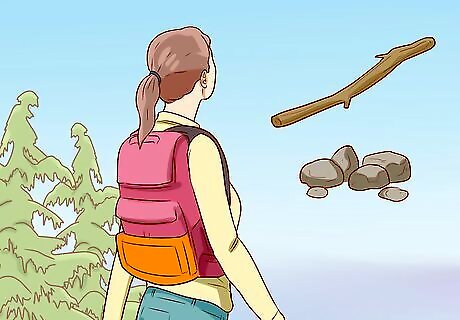
Pay attention to your surroundings while walking. If you don't carry a weapon, you can use something you find as a weapon tin case a dog attacks. A sturdy board, pole, or branch should be your first choice. If a dog is threatening you, point the stick at the dog to keep it at bay. Do not try to swing at the dog, as this may anger the animal and cause it to attack. If no sticks or poles are around, rocks are the next best choice. Even if there isn't an aggressive dog nearby that could attack, if you're in unfamiliar territory, it's smart to be aware of your surroundings. Consider what objects you could use to defend yourself in the case of a dog attack.

















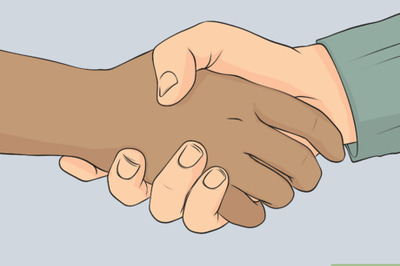
Comments
0 comment